Nirian/E+ via Getty Images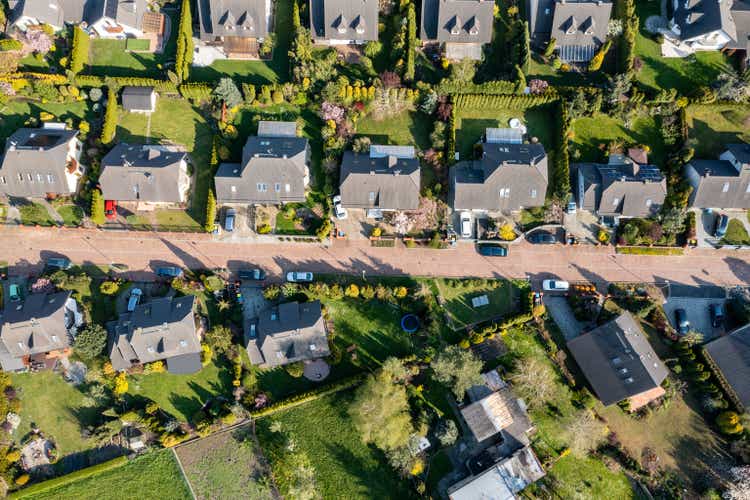
This is an abridged version of the full report published on Hoya Capital Income Builder Marketplace on June 13th.
REIT Rankings: Single-Family Rentals
Amid mounting recession worries and a return of heart-stopping market volatility, residential REITs – particularly the traditionally countercyclical single-family rentals – should once again prove to be a source of relative shelter. We remain bullish on the broader Single-Family Rental REIT (“SFR”) sector given the secular growth tailwinds of limited single-family supply and demographic-driven demand, attractive valuations, appealing inflation-hedging investment characteristics, and a boost in near-term demand from the historically swift surge in mortgage rates in 2022. In the Hoya Capital Single-Family Rental Index, we track the three SFR REITs: Invitation Homes (INVH), American Homes 4 Rent (AMH), and newly-US-listed Tricon Residential (TCN).
One of the most notable success stories of the Modern REIT Era, SFR REITs were born from the last economic crisis when a cascade of foreclosures enabled a new class of institutional rental operators to emerge by buying distressed properties en-masse. While we do expect home price appreciation to cool considerably over the next several months – and perhaps turn negative in some markets – widespread distress in the U.S. housing market is highly unlikely given the underlying supply constraints resulting from a decade of underbuilding, and ironically, due to the more significant presence of well-capitalized institutional investors. The share of single-family homes that are rented has nearly doubled since the early 2000s and now comprises nearly a quarter of the single-family market, but the majority of the SFR market is still managed by “mom and pop” investors that own between 1-9 units.
Persistent inflation is eroding built-up stimulus savings, but given that housing and food are the ultimate “essential” expenses, the slowdown will have to get awfully ugly to see widespread tenant credit issues. As we’ll discuss in more detail below, SFR REITs enter this uncertain economic period on very solid footing, benefiting from historically favorable Buy vs. Rent economics resulting from the historic surge in mortgage rates through the first half of 2022. Recent data from John Burns Real Estate Consulting highlights that while the monthly cost of owning and renting was nearly at parity a year ago, owning a home now costs $839 more per month than renting a comparable unit. This differential is almost $200 higher than at any time since 2000, and households now hold a historically high preference for renting over buying.
Single-Family Rental REITs exhibit attractive risk profiles and investment characteristics, providing a strong inflation hedge from their short-duration leases and relatively muted sensitivities to interest rates and economic growth. Unlike many other interest-rate-sensitive REIT sectors, rising interest rates and mortgage rates have historically benefited these SFR REITs as households on the margins of buying or renting tend to be pushed towards rental markets. As we’ll discuss in this report, SFR REITs enter this uncertain period on solid footing, benefiting from historically favorable Buy vs. Rent economics and double-digit rates of “embedded” mark-to-market rent growth that will be realized over the coming quarters even amid a broader economic slowdown.
Deep-Dive into SFR REIT Portfolios
Single-Family Rental REITs concentrate heavily on the Sunbelt markets that have experienced the strongest economic growth during the post-GFC recovery and in the early post-pandemic recovery. Invitation Homes is the single-largest owner of SFRs in the country with nearly 83k units with a significant presence on the West Coast and in Florida. American Homes owns nearly 60k units and focuses primarily on the Sunbelt and Midwest regions. Last October, Tricon Residential completed its dual-listing in the U.S. in a $570M IPO after trading exclusively on the Toronto Stock Exchange since 2010. Tricon owns and/or operates more than 31,000 homes in 21 markets across the United States and Canada but is concentrated primarily in the U.S. Sunbelt markets.
The average single-family monthly rent is $1,100 per month, but REIT portfolios skew towards the higher end of the quality spectrum with an average rent of around $1,800 per month in homes that are typically around 2,000 square feet. These three SFR REITs own a combined 172,000 SFR units in relatively high-value suburban markets and, importantly, their tenant credit profile is far better than the national averages for renter households with average annual income ranging from $85k-130k – well above the average renter household at $36k – and an average income-to-rent ratio of around 5x. The average SFR head-of-household is 38-42 years old, an age cohort that will see the strongest growth of any 5-year segment over the next decade.
Other major institutional investors involved in the SFR sector include private equity firms Pretium Partners which owns/operates more than 70,000 homes through its Progress Residential platform, Cerberus Capital, which owns more than 34,000 homes through FirstKey Homes, Amherst Group, which owns/operates more than 34,000 homes through Main Street Renewal, and NexPoint, which owns roughly 17,000 homes through Vinebrook Homes, its non-traded REIT that is exploring a potential public listing. NexPoint also manages apartment REIT NexPoint Residential (NXRT) and mortgage REIT NexPoint Real Estate Finance (NREF). Several traditional Wall Street “heavyweights” are active in the space as well including Blackstone (BX), which owns 17,000 homes through Home Partners of America.
At the center of this growth, SFR REITs have been leaders in the Property Technology (“PropTech”) revolution to reduce costs, increase renter satisfaction, and fuel accretive growth. Honed out of necessity, SFR REITs have leveraged emerging technologies like virtual house tours, Smart Homes, and fully digital relationships with tenants to achieve NOI margins that are nearly on par with multifamily REITs. We continue to believe that these three SFR REITs are uniquely positioned to benefit from the broader acceleration of institutionalization within the single-family housing industry and one that we see as a positive development for both renters and the broader housing market.
Scale is a key competitive advantage for these large institutional SFR owners, and relative to apartment buildings where each property can have several hundred units, geographical fragmentation makes it more difficult to achieve sufficient scale, making density within markets especially critical. Initially, in a phase we call SFR 1.0, the SFR REIT business model depended on the bulk acquisition of distressed properties, and REITs used foreclosures as a primary source of new home acquisition. In SFR 2.0, the business model evolved into a stabilized ownership model, focused on achieving efficiencies and growing via one-off acquisitions. In SFR 3.0, we see SFR REITs mirroring the model of the larger apartment REITs with internal development teams capable of supplementing the acquisition-fueled external growth channels.
Single-Family Rental Fundamentals
SFR fundamentals are as strong as they’ve been since the sector emerged in the early 2010s from the ruins of the Great Financial Crisis. The combination of historically low housing supply and strong demographic-driven demand – with added pandemic-driven tailwinds – has sent single-family rents soaring at the fastest rate on record. Mirroring the surge in suburban home values amid this lingering housing shortage, SFR REITs have reported double-digit rent growth in recent months while occupancy rates continue to set record-highs. As discussed in our REIT Earnings Recap and REITweek updates, SFR REIT rent growth on new leases averaged 15% in Q1 and accelerated to 16% in May, while renewal rates rose 7.8% in Q1 and accelerated to 8.1% in May – resulting in fresh record-highs for blended rent growth of around 10%.
These reports were consistent with private market data showing similar strength across residential rental markets. Apartment List released their June Rent Report earlier this month, which showed that national rents are 15.3% higher than last year while data from Zillow (Z) showed that rents are rising near the fastest pace on record and all 60 of the largest markets are seeing rent growth in excess of 6.5%. CoreLogic’s most recent report showed that SFR rent growth continued at a record pace in early 2022, up 13.6% from one year earlier as “slim inventory continues to squeeze renters, as do robust home price gains.” CoreLogic noted that warmer areas of the country continued to experience the highest rent growth with prices in two large Florida metro areas accelerating at about two-to-three times the national rate.
While all segments of the rental markets – apartments, SFRs, and manufactured housing – have seen accelerating rent growth since early 2021, SFR REITs began this recent uptrend from a higher starting point compared to their multifamily peers following a solid year of growth last year and, interestingly, have delivered consistently higher core revenue and NOI growth compared to the multifamily peers since the start of 2015. The momentum is expected to continue throughout 2022 with all three REITs projecting an acceleration in same-store NOI growth to 9.3%, on average, while FFO growth is expected to rise by double-digits for the second-straight year. Despite the record-rise in rental rates in 2021, occupancy rates climbed to fresh record-highs at 98% in Q1 – up 20 basis points from the same quarter last year.
Perhaps most significantly, SFR REITs have shown notable improvement in operating efficiencies over the past three years. Same-home operating expenses rose just 2.8% in 2021 compared to 6.5% revenue growth, and the trends of positive margin growth has continued into 2022 despite the broader inflationary cost pressures. Questions were raised before the pandemic after several quarters of rising same-store expense growth – primarily from property taxes – as well as rising capital expenditure levels per housing unit. Aided by turnover rates which continued to set record-lows, NOI margins set record-highs for full-year 2021 at 66% and improved to 68% in Q1, levels that are essentially on par with many of their multifamily peers.
SFR REITs have switched back into “growth mode” and continue to plow ahead with external growth plans through both traditional channels and emerging growth channels ranging from ground-up internal development, partnerships with homebuilders, and through the aforementioned iBuyers. Combined, these REITs have added more than $2.7B in net acquisitions over the past year, the highest twelve-month total since late 2016. These three REITs combined to add more than 10,000 homes to their portfolios in 2021 led by Tricon, which added roughly 6,500 homes while American Homes added 4,600 to its portfolio in 2021 while Invitation Homes added 4,000 homes.
Rapid home price appreciation and stiff competition in the “traditional” acquisition channel have forced SFR REITs to get creative with external growth plans. “If you can’t buy it, build it” has been the recent mantra as SFR REITs have effectively become strategic homebuilders through internal development and partnerships with existing builders. AMH – which has quickly become one of the largest homebuilders in the country – built 2,054 homes in 2021 through its internal AMH Development Program and expects to deliver between 2,100 to 2,400 homes in 2022. This internal development now accounts for half of AMH’s acquisitions with the remaining 50% split between its National Builders Program (buying new homes from homebuilders) and traditional acquisitions.
INVH announced a partnership with PulteGroup (PHM) last July to buy 7,500 new built-to-rent homes. Elsewhere, Lennar (LEN) partnered with Allianz to build $4B worth of SFR homes while Toll Brothers (TOL) partnered with Equity Residential (EQR) to build $2B rental units. These REITs have also tapped into the emerging “iBuying” industry to source acquisitions through relationships and direct investments into companies like Opendoor Technologies (OPEN) and Offerpad (OPAD) and leverage data from CoreLogic, CoStar Group (CSGP), Black Knight (BKI), and Redfin (RDFN) to source accretive acquisition opportunities.
Single-Family Rental REIT Performance
After delivering total returns of 52% in 2021, the SFR REIT sector has slumped through the first half of 2022 along with the rest of the REIT sector and broader equity market amid a historically rapid rise in interest rates. Unlike many other interest-rate-sensitive REIT sectors, however, rising interest rates and mortgage rates have historically benefited these SFR REITs as households on the margins of buying or renting tend to be pushed towards rental markets. The Hoya Capital Single-Family Rental REIT Index is lower by 25.4% in 2022, slightly lagging the 24.2% decline from the broad-based Vanguard Real Estate ETF (VNQ) and the 21.0% decline from the S&P 500 ETF (SPY).
Tricon is the lone SFR REIT in positive territory this year while both INVH and AMH are lower by roughly 10%. The Sunbelt-heavy focus of AMH and Tricon delivered superior performance in 2020 during the worst of the pandemic, but INVH delivered the most impressive performance in 2021 due, in part, to a strong rent growth rebound in its West Coast markets. On a trailing five-year basis, Invitation Homes has delivered the strongest total returns with 15.6% average annual total returns compared to 11.7% from American Homes.
One of the newest REIT sectors, single-family rental REITs have produced excellent total returns relative to other REIT sectors in their short history, riding the tailwinds of the intensifying housing shortage across the U.S. housing market. From 2015 through the end of 2021, the SFR sector produced compound annualized total returns of 20.9% per year compared to the 11.7% annual returns from the broad-based Equity REIT Index. New home construction – particularly in the single-family category – has been historically depressed over the last decade, a result of the substantial and far-reaching fallout from the financial crisis on the residential construction industry. In the 2010s, the United States built homes at a rate that was 50% below the post-1960 average after adjusting for population growth.
Takeaways: Sturdy Shelter Amid Volatility
Amid mounting recession worries and a return of heart-stopping market volatility, residential REITs – particularly the traditionally countercyclical single-family rentals – should prove to be a source of relative shelter. Single-Family Rental REITs were born from the last economic crisis when a cascade of foreclosures enabled a new class of institutional rental operators to emerge by buying distressed properties en-masse. While home price appreciation is poised to slow considerably – and perhaps turn negative in some markets -wide distress in the U.S. housing market is highly unlikely given the underlying supply constraints resulting from a decade of underbuilding, and ironically, due in part to the broader presence of well-capitalized institutional investors.
For an in-depth analysis of all real estate sectors, be sure to check out all of our quarterly reports: Apartments, Homebuilders, Manufactured Housing, Student Housing, Single-Family Rentals, Cell Towers, Casinos, Industrial, Data Center, Malls, Healthcare, Net Lease, Shopping Centers, Hotels, Billboards, Office, Farmland, Storage, Timber, Mortgage, and Cannabis.
Disclosure: Hoya Capital Real Estate advises two Exchange-Traded Funds listed on the NYSE. In addition to any long positions listed below, Hoya Capital is long all components in the Hoya Capital Housing 100 Index and in the Hoya Capital High Dividend Yield Index. Index definitions and a complete list of holdings are available on our website.


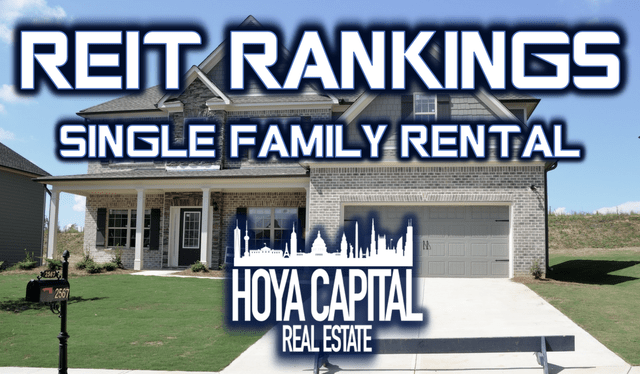
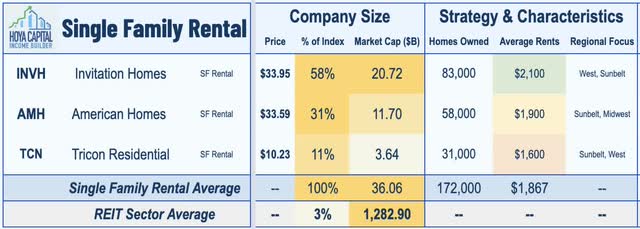
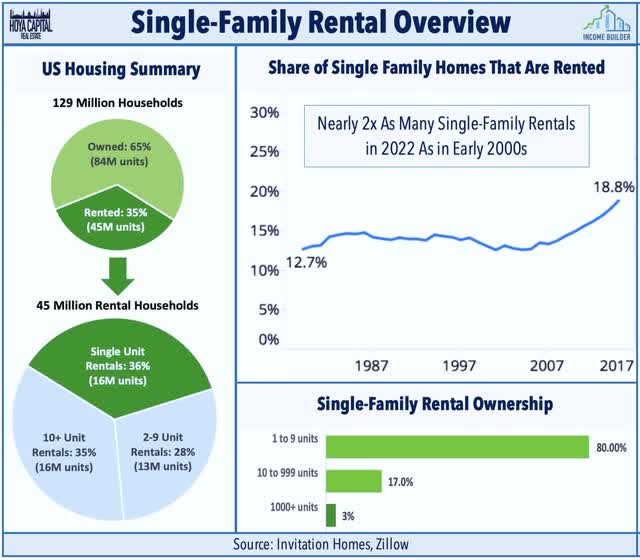
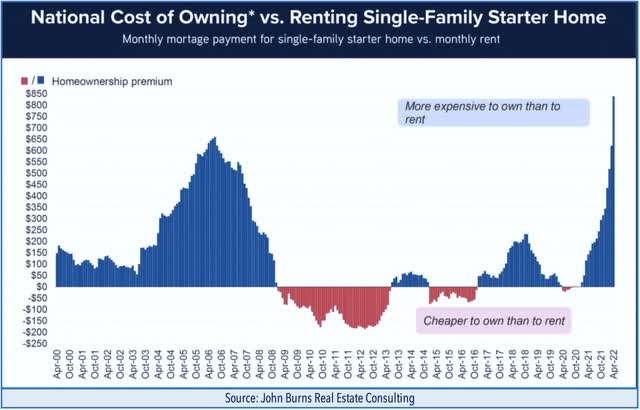
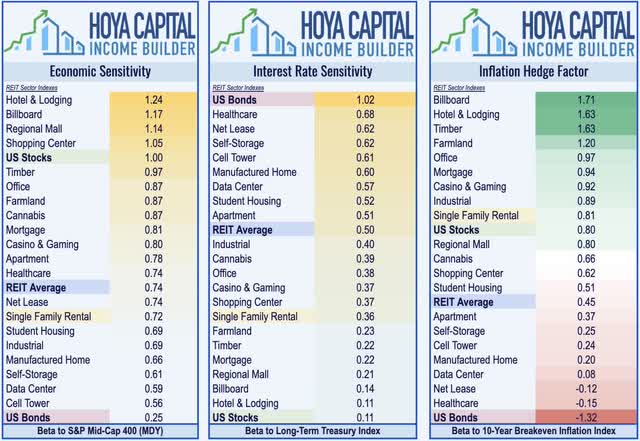
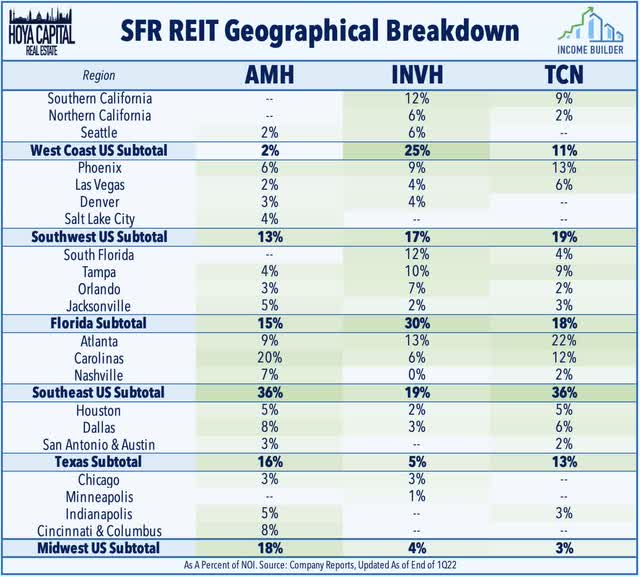
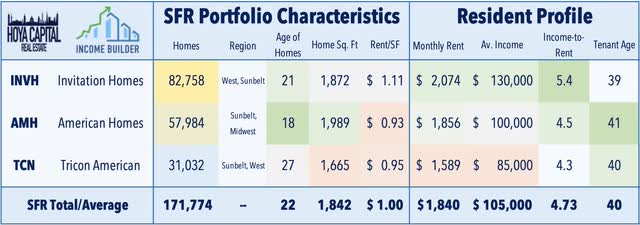
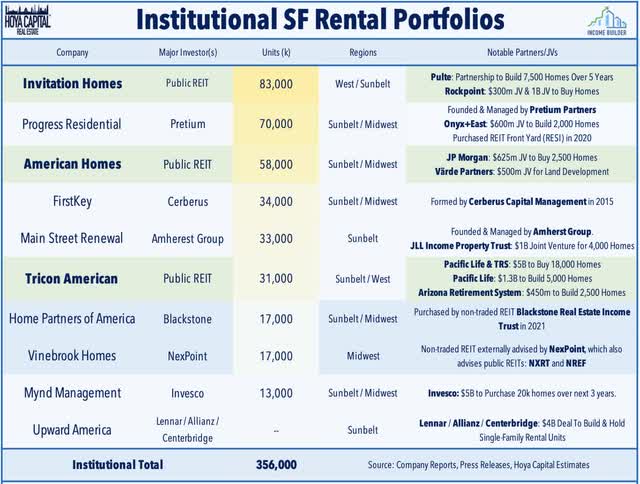
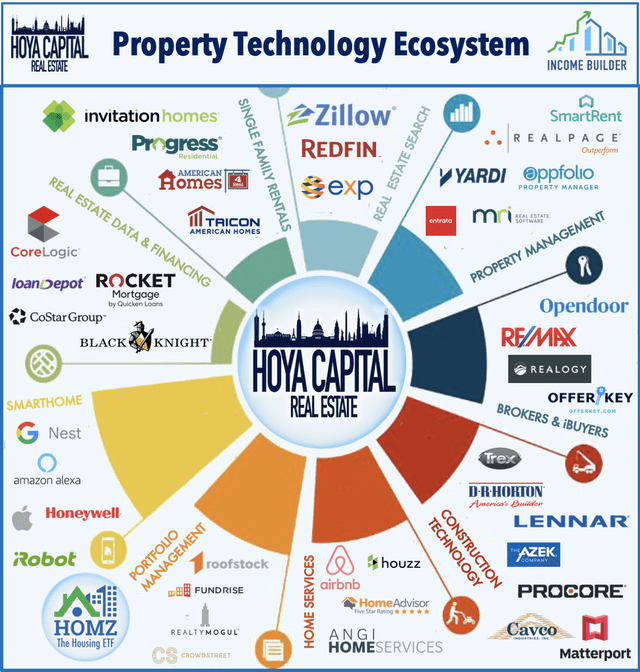
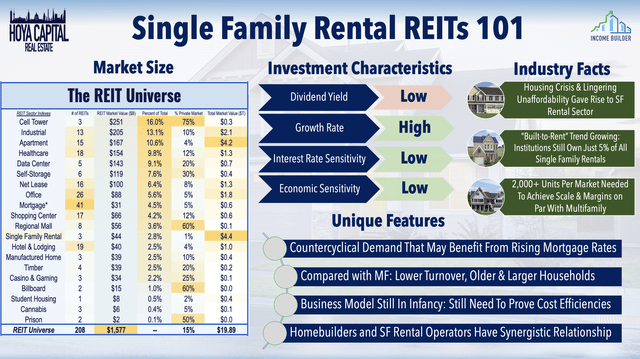
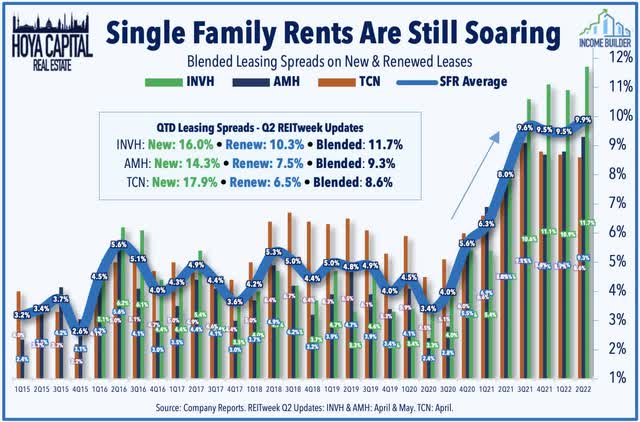
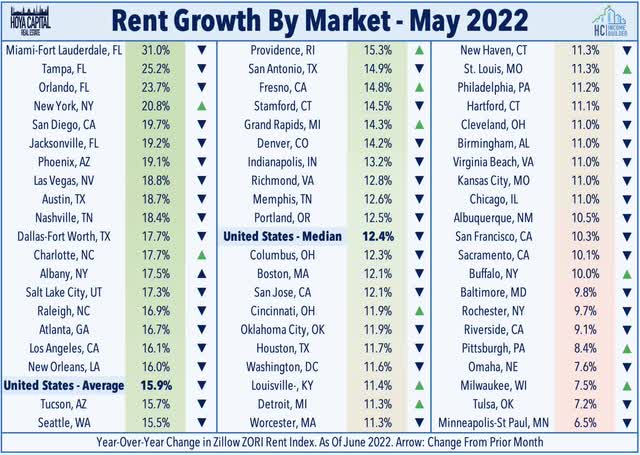
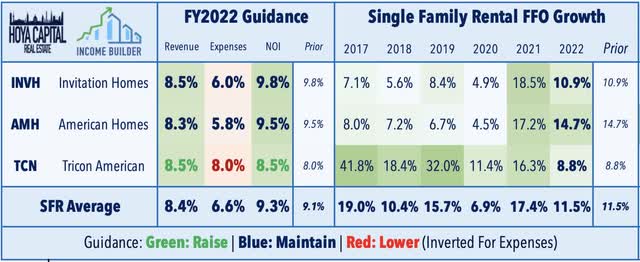

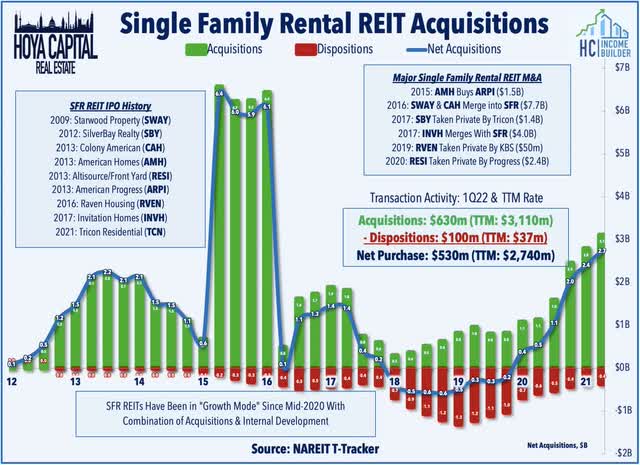
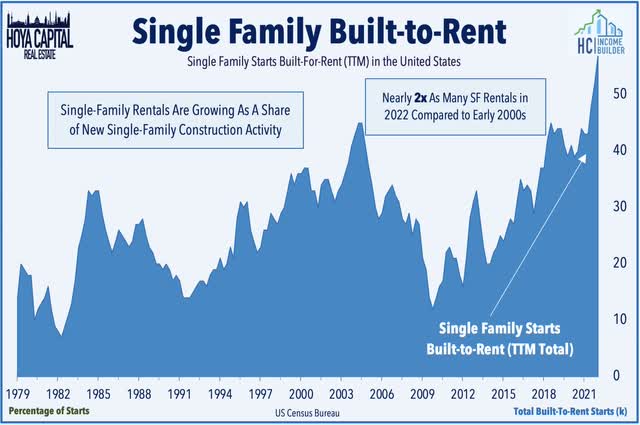
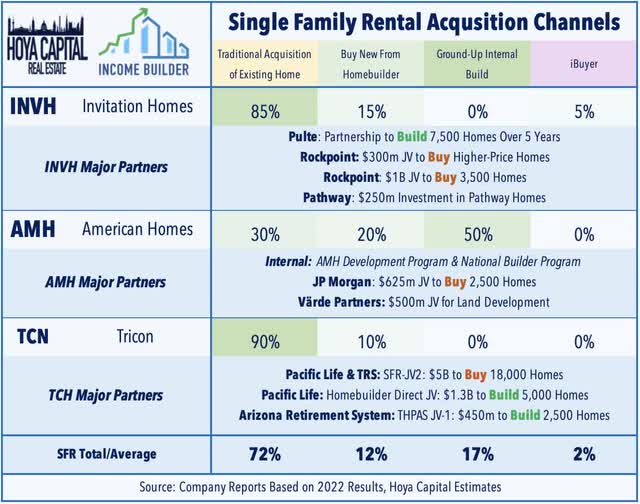
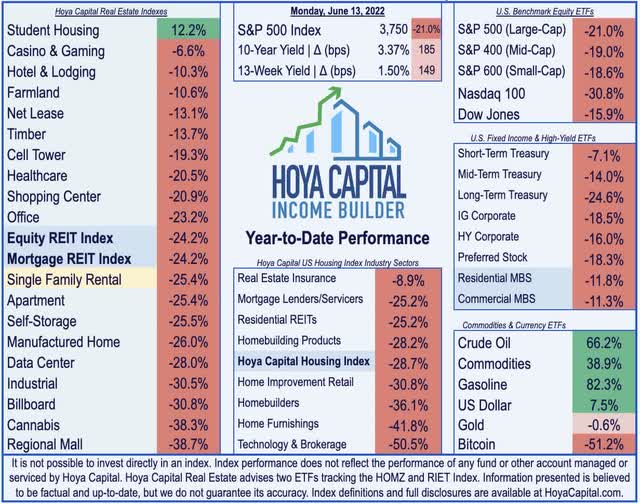

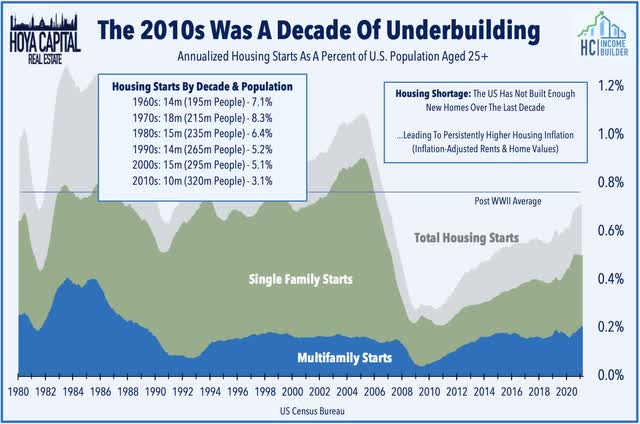
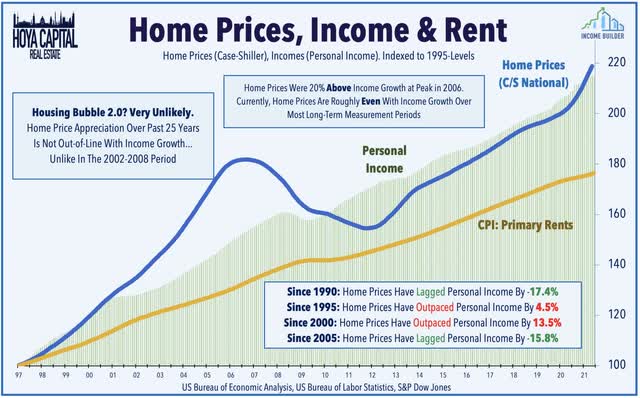
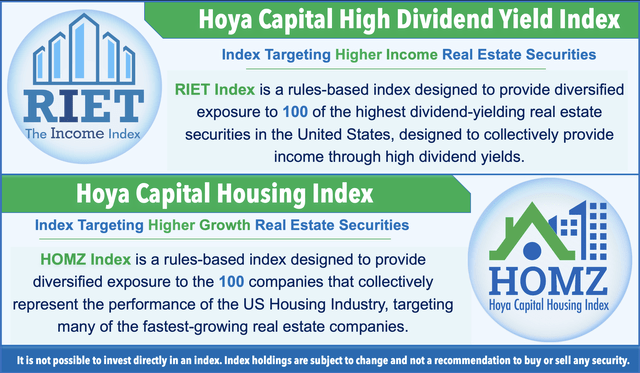
Be the first to comment